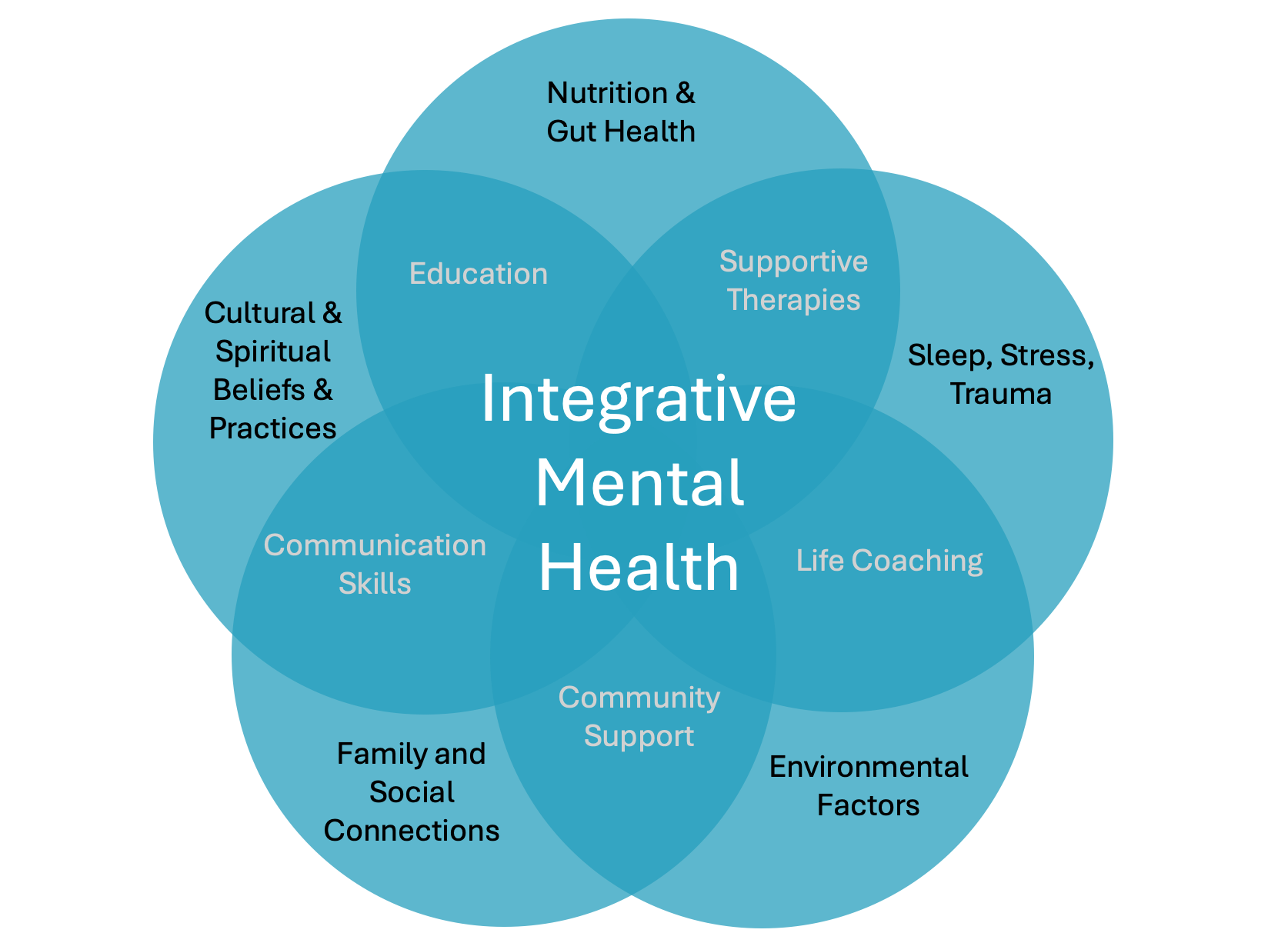Exploring Holistic and Integrative Healing Therapies for Mental Health: An Overview
Mental health treatment is evolving beyond traditional talk therapy and medication, embracing an integrative approach to healing that focuses on the mind, body, and spirit. As research broadens, alternative and holistic therapies like frequency medicine, color therapy, EMDR, somatic therapy, and sand tray therapy have emerged as valuable tools for enhancing emotional, psychological, and physical well-being. Here’s an exploration of these therapies, how they work, and their benefits in integrative mental health care.
1. Holistic, Alternative, and Integrative Healing: A New Paradigm
Integrative mental health therapy considers the whole person and uses evidence-based practices from both conventional and alternative methods. In contrast to pharmacotherapy, these approaches prioritize natural, non-invasive methods that help individuals reach greater balance and resilience. Integrative approaches often combine multiple therapeutic modalities, each addressing different dimensions of healing.
2. Frequency Medicine
Frequency medicine is based on the idea that the body operates at specific electromagnetic frequencies. When these frequencies fall out of alignment due to stress, trauma, or illness, health can deteriorate. By restoring these natural frequencies through specific tools like tuning forks, sound baths, or devices that emit specific frequencies, the body can return to a state of harmony.
- How It Works: Frequency medicine uses sound waves or electromagnetic pulses to influence the body’s energy field and cellular vibrations. Sessions might involve sound baths, bio-resonance devices, or tuning forks or targeting acupressure points.
- Example: In a bioscan session, a client’s energy frequencies are scanned using a bio-resonance device that detects imbalances across various organ systems and energy fields. The device then delivers specific frequencies back to the body, aiming to recalibrate and restore energetic balance.
- Research & Benefits: Studies have shown frequency therapy can result in relaxation, stress relief, and improved emotional clarity, reducing anxiety and depression, especially when used alongside meditation, as it helps lower cortisol levels.
3. Color Therapy
Color therapy, or chromotherapy, uses colors to impact mood and mental states. Each color has a unique wavelength, affecting individuals on a physiological and emotional level.
- How It Works: Color therapy utilizes specific colors to stimulate or calm certain parts of the brain. Colors like blue and green are generally calming, while red and yellow are invigorating. Exposure can be through light panels, colored rooms, or even wearable lenses.
- Example: A therapist may use a soft blue light during sessions with clients experiencing anxiety, as blue is associated with calmness and stability.
- Research & Benefits: Research has shown that blue light can reduce blood pressure and calm the autonomic nervous system, while green has been found to reduce stress and improve focus.
4. Eye Movement Desensitization and Reprocessing (EMDR)
EMDR is a therapeutic technique developed to process trauma and alleviate symptoms of PTSD, anxiety, and depression. By targeting specific memories or traumatic events, EMDR can help clients integrate difficult experiences without being overwhelmed by them.
- How It Works: EMDR uses bilateral stimulation, such as side-to-side eye movements or alternating taps, while the client recalls traumatic memories. This stimulation helps reprocess memories, reducing the emotional intensity attached to them.
- Example: In sessions, clients might follow the therapist’s hand movements with their eyes while revisiting painful memories, which allows the brain to process and integrate these experiences in a safe and contained way.
- Research & Benefits: Numerous studies support EMDR’s effectiveness, showing it can significantly reduce PTSD symptoms and improve emotional regulation. The Department of Veterans Affairs and the World Health Organization have recognized EMDR as an effective treatment for trauma and PTSD.
5. Somatic Therapy
Somatic therapy emphasizes the connection between the mind and body, using body-based techniques to release stress and trauma stored in the nervous system.
- How It Works: Somatic therapy integrates body awareness with psychotherapy, helping clients recognize physical sensations connected to emotions. Through methods like breathing exercises, body scans, and mindful movement, clients learn to regulate their physical response to emotional triggers.
- Example: A therapist might encourage a client to focus on their breath or the physical sensation of a specific emotion, like a tightness in the chest when experiencing anxiety.
- Research & Benefits: Research indicates that somatic approaches help reduce symptoms of PTSD, anxiety, and depression by recalibrating the body’s stress responses. Studies show that these therapies can also reduce blood pressure and cortisol, supporting long-term health.
6. Sand Tray Therapy
Sand tray therapy involves creating scenes in a sandbox using small figurines and objects, allowing clients to express and process emotions in a tangible, non-verbal way. This approach is especially effective for children but is increasingly used with adults to explore subconscious patterns and trauma.
- How It Works: Clients create scenes that represent their thoughts, emotions, or experiences. The therapist and client may interpret these scenes together, unveiling deeper meanings and insights.
- Example: A client might use a figure of a knight to represent their own resilience or a small house to symbolize their desire for stability.
- Research & Benefits: Studies suggest that sand tray therapy can enhance emotional resilience, promote creativity, and allow individuals to explore complex feelings in a safe, guided environment.
7. Benefits of Integrative Mental Health Therapy
Integrative approaches can offer significant mental health benefits by addressing issues at multiple levels—emotional, physical, and energetic.
- Whole-Person Healing: By engaging the body and mind, integrative therapies foster holistic healing, encouraging self-awareness and resilience in ways talk therapy alone may not achieve.
- Non-Invasive: Many alternative therapies are gentle and non-invasive, making them ideal for individuals who want to avoid or complement medication.
- Self-Regulation and Empowerment: Techniques like somatic therapy and EMDR help clients learn self-regulation, empowering them to manage their own mental health more effectively.
- Personalized Therapy: Integrative mental health allows for a highly personalized approach, where multiple therapies can be combined to suit an individual’s unique needs.
8. Examples of Integrated Therapy in Practice
A therapist working within an integrative model might combine EMDR for trauma processing, somatic techniques for stress reduction, and frequency medicine to promote deep relaxation. They might use color therapy and calming music in the therapy room, creating an environment that inherently supports mental wellness.
Final Thoughts
Integrative mental health therapy represents a shift towards comprehensive, compassionate, and effective healing methods. By embracing both modern research and ancient wisdom, integrative approaches offer a profound path for those seeking more than just symptom management—creating opportunities for genuine transformation and wholeness.





